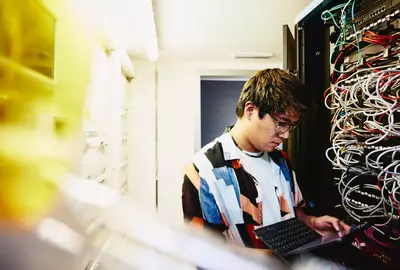First impressions matter. People will make a lot of assumptions about you within the first few seconds of meeting you. It’s human nature. One of the most important first impressions you will make is during a job interview.
Those first few seconds can play a big role in how the rest of the interview will proceed. You need to be the best version of yourself from the second you start interacting with the interviewer.
With this in mind, we’ve created a list of 7 things to keep in mind to help you make the most of the first 5 seconds of a job interview, and make a positive impression:
1. arrive on time
This is an obvious one. Always be on time for job interviews. If possible, be a few minutes early. It’s important to respect other people’s time.
And if you are late, even by a couple of minutes, you are already hurting your chances of getting a call for another interview or job offer. People will assume this could be a sign of things to come.
2. be ready for anything
It is tough to know how an interview will start, so be ready for anything. Be ready for it to start with small talk and the common interview questions. The interviewer can also jump right with a hard line of questioning. Be prepared for all types of conversation (don’t forget to bring copies of your resume and visit the company website to familiarize yourself with their mission).
3. dress like a professional
Appearance matters. Avoid wearing anything inappropriate. Always dress like a professional. The type of clothing required to fit the part will vary.
To make a good impression, it is crucial to familiarize yourself with the company culture so that you can adhere to the dress code and meet the expectations set by the company.
Dress for the job you want, even if you are taking part in a video job interview. The same rules apply for dressing and appearance when meeting people on video.
4. sit up straight and be aware of your body language
The perception other people have of you has a lot to do with how you present yourself, particularly your posture. Try to always maintain good posture. Be aware of your facial expressions and body language. Maintain eye contact and engage with the hiring manager.
These are nonverbal cues that interviewers will use to make assumptions about you. For example, those with good posture appear confident, while those who slouch appear less engaged and awkward.
dazzle employers in your next job interview
Ace your next interview with our expert strategies. From acing common questions to leaving a lasting impression, we've got you covered.
discover our tips5. take a deep breath beforehand and stay calm
A job interview can be nerve-wracking. It’s common for people to have jitters and feel anxious beforehand. Take a deep breath and collect yourself beforehand. This will help you re-focus and start your interview on the right foot. And then, answer the question directly and effectively.
6. greet your interviewer
This is another obvious tip. But it’s worth repeating. Always greet your interviewer right away. Smile and use a friendly and welcoming tone. This can help you establish rapport and get things started positively.
7. show enthusiasm and happiness to be at the interview
Having positive energy is contagious. People are attractive and more likely to engage with people on a deeper level if they have good energy. Show your enthusiasm for the opportunity and be appreciative of the job interview opportunity you have received.
8. be yourself!
One of the most important things to keep in mind is to always be yourself. Don’t try to be something or someone you are not. Be your authentic self throughout the interview.
Being on time, looking professional, holding your head high, and greeting your interviewer warmly will help you get the most out of the first 5 seconds of your interview. It will also set the tone for what is to come.
If you are on the job interview circuit and looking to make a career move, contact one of our recruiters today to explore job opportunities in your area.
ready to grow your career?
Make sure your resume is up-to-date. Then share it with us to connect with a recruiter and be matched with job opportunities that works for you.
meet a recruiter


